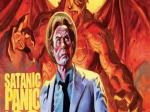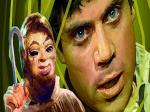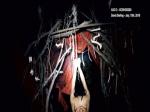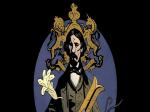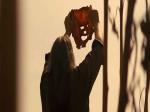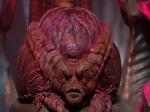Categories

Crypt of Curiosities: Pits and Pendulums – A Look Back at the Film Adaptations of Edgar Allan Poe’s Seminal Short Story
zombie/films » dailydead » Crypt of Curiosities: Pits and Pendulums – A Look Back at the Film Adaptations of Edgar Allan Poe’s Seminal Short Story
Posted date: 2017-08-04 23:04:29

Out of all of Poe’s works, few have had as big of an impact on me as “The Pit and the Pendulum.” Like many youngsters with an interest in the macabre, it was the first to immediately grab my attention, its title conjuring images of a massive, swinging blade cutting a poor sap wide open. Of course, there’s more to the poem than that—it’s focused less on the titular blade and more on the paranoia it creates, as well as painting a portrait of the horrors of the Spanish Inquisition. It also has, quite infamously, one of the most frustrating deus ex machinas of all time, where the French army stops the swinging pendulum mere seconds before it can bisect our bound protagonist, much to the disappointment of English students the world over. While it’s hardly Poe’s best work, it’s certainly among his most iconic, and has received quite a few adaptations to its name.
The first adaptation of “The Pit and the Pendulum” was directed by Alice Guy-Blanché, the first woman to ever step behind the camera. Released in 1913, the film focuses on young lovers (Darwin Karr and Fraunie Fraunholz), who are framed for stealing jewels from the Church, leading them to being arrested and tortured. The Pit and the Pendulum (1913) was remarkably horrific for its day, including graphic details of live rats gnawing at Alonzo’s chest, among other tortures—presumably including a pit and a pendulum. Unfortunately, this is all secondhand from contemporary reviews, as Alice Guy’s adaptation of “The Pit and the Pendulum” is partially lost, with only the first of its three reels surviving.
As far as surviving adaptations of “The Pit and the Pendulum” go, the first of note is Roger Corman’s 1961 take on the tale. The second of Corman’s financially successful “Poe cycle,” The Pit and the Pendulum is a rather loose adaptation of the original two-page short story, setting it a few decades after the Inquisition. The script, penned by horror legend Richard Matheson, focuses on Francis Barnard (John Kerr), an Englishman traveling to Spain after learning his sister Elizabeth (Barbara Steele) has died in her husband’s castle. The man in question, Nicholas Medina (Vincent Price), claims she died of some vague blood disorder, but the more Francis pokes around, the more he realizes this is not the case.
It should go without saying, but Vincent Price is the show-stealer here. His Nicholas is a far cry from the mad, gloating villainy of The Masque of the Red Death’s Prince Prospero or Dr. Phibes, but Price does an equally great job playing a nervous wreck, haunted by the deaths of his wife and parents, teetering on the edge of insanity. The other players in the film aren’t quite as strong as some of Price’s other ensembles (Theatre of Blood has what I consider to be a candidate for the greatest cast of all time), but they get the job done well enough.

Besides, the real foil for Price isn’t any actor—it’s the castle itself. Much like The Fall of the House of Usher, and to a lesser extent, The Masque of the Red Death, the entirety of The Pit and the Pendulum is set inside the castle’s hallowed walls (sans a dreamlike opening credits crawl). This means that the strength of any given scene revolves in part around the strength of the castle’s atmosphere. And make no mistake—the atmosphere is thick. Cobwebs, gargoyles, suits of armor, torture devices—The Pit and the Pendulum is just packed with gothic standbys brought beautifully to life by great production design.
The best example of the film’s production design concerns the titular pit and pendulum, which, like many Corman/Poe films, doesn’t appear until the last ten minutes. But, when it does, it’s glorious—a massive chamber with haunting murals of robed figures painted on the walls, and a shimmering blade contrasting with an inky abyss. It’s completely surreal and outside the realm of geographic possibility (not to mention how much time and effort must have been spent on painting the chamber’s walls with inky blues and blacks), but that doesn’t matter. When adapting horror as pure as Poe, all internal logic can be freely thrown out the window in favor of creating the most unnerving images.
This philosophy makes itself clear in the film’s many stylized flashback sequences showing Nicholas’ tragic backstory. The flashbacks are confusing, and sometimes conflicting, but are presented as the hazy memories of multiple unreliable storytellers, explaining their aggressively abstract nature. All sorts of irregular framing and bizarre camera movements are put to great work in the flashbacks—and perhaps most importantly—genius use of color, with the filter over the flashback changing to deeper or brighter hues depending on the subject and intensity of any given part of the flashback. One particular moment, where a violent act is punctuated by a sudden shift in camera angles and change in hue from a dark purple to the bright orange of hellfire, can easily go toe-to-toe with the most genius bits of any of Corman’s films.

While The Pit and the Pendulum (1961) is a loose adaptation of Poe’s tale, it’s not quite as loose as the next take on it: Harald Reinl’s wonderfully named The Torture Chamber of Dr. Sadism. In fact, it’s so loose that it’s not even worth covering in-depth—the only relation it shares with the poem is that, at one point, a pit and a pendulum show up. Another genuine attempt at adapting the poem into a feature film wouldn’t be until nearly 30 years after Corman’s version with master of horror Stuart Gordon’s very own The Pit and the Pendulum (1991).
Unlike Corman’s take on the tale, Gordon’s The Pit and the Pendulum takes place smack dab in the middle of the Inquisition, where Maria (Rona De Ricci) and her husband, Antonio (Jonathan Fuller), try to make a living as bakers. Unfortunately, the economy isn’t exactly thriving under the Inquisition, as the church saps the city’s wealth and kills dissidents in the name of God. Dissidents like Maria, who has the grave misfortune to provoke Grand Inquisitor Torquemada (Lance Henriksen), who brands her a witch and locks her away in his massive castle.
While the non-Price leads of Corman’s The Pit and the Pendulum were nothing to write home about, I’m afraid to say that the leads of 1991’s The Pit and the Pendulum just aren’t all that good. Rona De Ricci’s take on Maria is serviceable for the character, but Fuller is as flat as a board, completely and totally unengaging. Thankfully, the side characters are a delight, including Gordon regular Jeffrey Combs as an inquisitor with hilariously oversized glasses, and Oliver Reed shines in his scene-long cameo.

But, of course, the real star of The Pit and the Pendulum is Lance Henriksen. Torquemada is a surprisingly well-rounded character who manages to go beyond Price’s interesting-yet-shallow, disturbed landowner to become a fascinating example of evil. He’s a man who has absolute faith in God and the punishments he believes the Lord has deemed worthy of carrying out, not once questioning the morality of the horrible murders and inhumane torture he dispenses. But he doesn’t believe in exceptions, either. Torquemada’s bed is positioned right under a Sword of Damocles, dangling from a rotting string mere feet above him as he sleeps under the assumption that if God decides he should die, then he will embrace it.
While it would be easy to write Torquemada off as just another one-dimensional fanatic—and make no mistake, Henriksen sells every last bit of the fanaticism with hammy glory—things get complicated when the inquisitor meets Maria. Torquemada falls desperately in love with the accused, not unlike The Hunchback of Notre Dame’s Frollo (a work which gets referenced many times over the course of Gordon’s The Pit and the Pendulum), causing him to question his faith, his sanity, and his worth in the eyes of God. He is, without a doubt, the most interesting and well-rounded character in either Corman or Gordon’s adaptation of the tale.
Still, Torquemada isn’t the most off-the-wall aspect of the film. No, that has to be the production design, which I can only come to describe as a high-gothic nightmare. Torquemada’s sprawling castle is a maze of rotting corpses, blood-stained torture devices, and lavishly designed suits of armor for the castle guards. And, clearly taking a cue from the climax of Corman’s The Pit and the Pendulum, it’s packed with all sorts of bizarre murals depicting skeletal apparitions of Death riding across fiery voids. It all has a very haunted house feel to it, which is an extremely good thing in a movie so willing to indulge in dream sequences, swashbuckling duels, and wanton gore.
While it’s clear Gordon wants to show the evils of the Inquisition, he also wants the viewer to have a good time, and let me tell you, that’s one hell of a balancing act to try and pull off. Does he accomplish it? Not really. While The Pit and the Pendulum is overwhelmingly focused on horror, it does have brief excursions to some of Gordon’s signature macabre comedy, and it falls flat completely. The same can be said about the first big sword fight, which has some neat spectacle (Antonio kicking a soldier into an iron maiden is a brilliant touch), but feels incredibly out of place in a film that’s otherwise so devoted to keeping a horror atmosphere. Still, what works here works well, and any movie that features both Oliver Reed getting buried alive in a wall (complete with a direct quotation from The Cask of Amontillado) AND a skeleton getting ground into dust is, at the very least, very entertaining.
That said, the real standout scene is, like any good adaptation of The Pit and the Pendulum, the encounter with the pit and the pendulum, now looking something like an oversized, double-bladed scythe instead of the more standard half-moon design of Corman’s. It’s easily the best-directed segment in the film, using a variety of techniques—from rapid cutting to extreme close-ups—to sell the tension of the situation. And, in a particularly genius touch, The Pit and the Pendulum makes a point to show a rat getting sliced in half by the blade inches above Antonio’s chest, showcasing the pendulum’s terrifying power while also allowing Gordon to indulge in the splattery hyper-violence that made his films infamous.

The truth is, nothing I say about the quality of The Pit and the Pendulum can sum it up as well as one of its big set pieces: the second duel against Torquemada’s goons while the titular pendulum swings back and forth, cutting up any soldier unlucky enough to be standing in its path. And fire is shooting from the floor. And there’s a spiked pit in the center of the room. And rats are crawling everywhere. It’s complete, unhinged absurdity, crossing so far into being out of place in the film that it somehow loops right around to being the perfect summation of everything that’s so right and so horribly wrong with The Pit and the Pendulum. It’s the sort of scene that can only come from a cast and crew just throwing every idea at the wall and having a blast doing it. It walks a practically nonexistent line between dazzling and moronic, as thematically out of place as it is offbeat and imaginative. It’s big, it’s messy, and silly, and above all else, it’s fun.
Still, the best adaptation of The Pit and the Pendulum isn’t a feature film at all. In 1984, famed Czech animator and surrealist Jan Švankmajer (Alice, Conspirators of Pleasure, Little Otik) directed The Pendulum, the Pit and Hope, a mashup between Poe’s “The Pit and the Pendulum” and Auguste Villiers de l'Isle-Adam’s legendary Inquisition-set short story, “A Torture by Hope.”
The film follows “A Torture by Hope” closer than it does “The Pit and the Pendulum,” with a man (stated in the short story to be a rabbi) being dragged in for torture by the Inquisition. Only here, the method of his torture is straight out of Poe. He is bound near a pit and forced to watch as a pendulum lowers itself to cut his chest wide open.
However, this being a Švankmajer film, the direction is nowhere near as conventional as the other adaptations of “The Pit and the Pendulum.” For one, The Pendulum, the Pit and Hope is done entirely with POV shots from our unnamed protagonist, but frequently cutting between different aspects of a given location or object to show his shift in focus. It’s a gleefully strange method of storytelling, melding prolonged, immersive sequences with brief bursts of rapid cutting. It’s jarring, sure, but it’s jarring in the best way, helping create a visual experience that’s as startling and unsettling as it is enjoyable to watch.
The atmosphere is heightened by the aesthetic that is, in true Švankmajer form, dank and dusty. The pendulum’s chamber may still feature a skeleton mural for authenticity’s sake, but it is otherwise a wholly depressing setting, devoid of light or liveliness. Adding to the grimy feel is the usual creaky Švankmajer sound design, where every moving object sounds like it’s scraping against a hard surface. It all comes together to make one hell of an audio-visual experience, and that’s not even touching on the stop-motion.
Švankmajer’s famous for his animation, and while it isn’t used a whole bunch in The Pendulum, the Pit and Hope, what’s there is superb, particularly when the film gets past the swinging pendulum and goes on to loosely adapt an execution method mentioned in “A Torture by Hope,” the auto da fé, execution by burning. Naturally, this is depicted by a strange contraption—an advancing, mechanical wall of demonic gargoyles, with fires raging in their hollow eyes and mouths. It is, without a doubt, the most visually interesting part of the film, and easily one of Švankmajer’s cleverest creations, turning the Inquisition’s “holy” acts into a literal manifestation of evil, man-eating demons.
The Pendulum, the Pit and Hope may be brief, and it may not be conventionally enjoyable, but it does something that no other surviving adaptation of “The Pit and the Pendulum” was able to do. It made the scene horrifying. Oppressive, imposing, and filled with despair, it is easily the strongest take on the story, both in terms of sticking to its content and sticking to its atmosphere. It proves that to make a good adaptation of “The Pit and the Pendulum,” you don’t need a complex plot on murder and intrigue, you don’t need dark comedy asides, you don’t even need color, dialogue, or recognizable actors. All you need is a pit, a pendulum, and dread.
Tags: None

